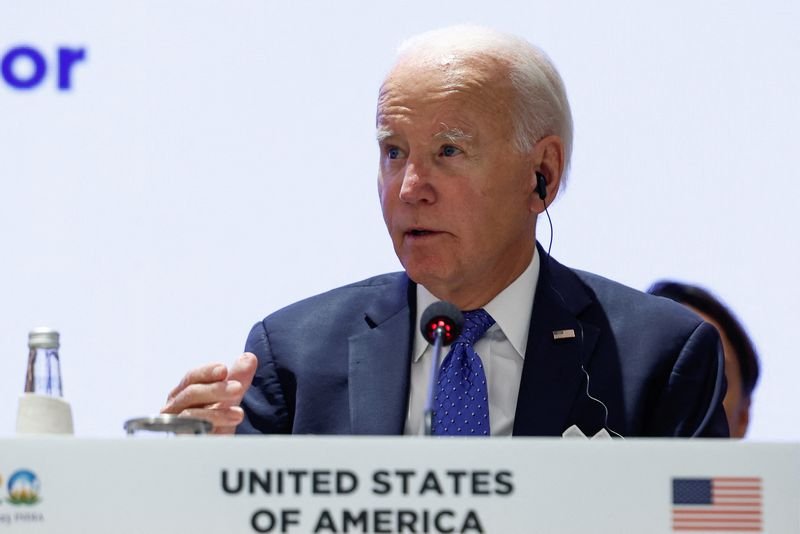Contents
- 1 Semiconductors: A Key Priority For US-Vietnam relations
- 2 Arms Supply Talks Cast a Shadow
- 3 Diversifying Arms Suppliers
- 4 Security Dimensions and Reducing Reliance
- 5 Historical Significance
- 6 Focus on Technology and Trade
- 7 Technology Collaboration
- 8 Addressing Skilled Workforce Shortages
- 9 Strengthening Critical Mineral Supply Chains
- 10 Trade and Human Rights Considerations
The US-Vietnam relations are set to strengthen their diplomatic ties during President Joe Biden’s visit to the country. The primary focus of these talks revolves around semiconductors and critical minerals. As both nations seek to bolster their cooperation in strategic areas.
Semiconductors: A Key Priority For US-Vietnam relations
The United States has been advocating for an upgrade in relations with Vietnam for several months,. Thus, recognizing the Southeast Asian nation’s significance in securing global supply chains and mitigating China-related risks. Semiconductors, a cornerstone of modern technology, will take center stage during these discussions.
Arms Supply Talks Cast a Shadow
However, diplomatic progress may face obstacles due to reports of Vietnam engaging in arms supply negotiations with Russia. The New York Times cited a Vietnamese finance ministry document outlining plans for a partnership in Siberia. The partnership proposal was to modernize Vietnam’s military capabilities. The proposed deal includes acquiring anti-ship missiles, antisubmarine aircraft, helicopters, and antiaircraft missile systems. In addition to fighter jets from Russia, potentially triggering U.S. sanctions.
Diversifying Arms Suppliers
Vietnam has also been in talks with other arms suppliers, including the United States. Recent high-level defense meetings with Russian officials indicate Hanoi’s pursuit of multiple options to enhance its military capabilities.
Security Dimensions and Reducing Reliance
Jon Finer, the U.S. principal deputy national security adviser, highlighted that the diplomatic upgrade would include a security dimension. While no arms deals are confirm at this stage, the U.S. and its partners expressed willingness to assist Vietnam in diversifying away from Russian military supplies, a move that Vietnam appears receptive to.
Historical Significance
The elevation of Vietnam to a diplomatic tier comparable to China and Russia marks a significant milestone. Thus, considering the complex history between Vietnam and the United States.
Focus on Technology and Trade
The visit comes at a time when bilateral trade and investment relations are flourishing. Most important for US-Vietnam relations. Additionally, territorial disputes in the South China Sea are heating up, emphasizing Vietnam’s geopolitical importance.
Technology Collaboration
Executives from prominent U.S. technology companies, including Marvell, Global Foundries, and Boeing, are expected to meet with Vietnamese counterparts. Including Secretary of State Antony Blinken during President Biden’s visit. Semiconductors will be at the heart of the action plan to be adopted, offering concrete measures to strengthen ties.
Addressing Skilled Workforce Shortages
In response to a severe shortage of engineers in the semiconductor sector, further support for training skilled workers is anticipated.
Strengthening Critical Mineral Supply Chains
Another critical aspect of the discussions is the reinforcement of supply chains for critical minerals, particularly rare earths. Vietnam possesses one of the world’s largest deposits of rare earths after China. Therefore, an agreement in this area is expected during President Biden’s visit.
Trade and Human Rights Considerations
Trade discussions and human rights concerns are also likely to be on the agenda. However, with Vietnam has a substantial trade surplus with the United States. Human rights issues, including the imprisonment of activists and restrictions on freedom of expression, remain a point of contention.
President Biden’s visit to Vietnam signifies a significant step forward in U.S.-Vietnam relations. Thus, with potential implications for global supply chains, technology cooperation, and regional stability.
Disclaimer: This article serves solely for informational purposes and should not be construed as financial advice. Thus, we strongly advise readers to conduct thorough research and consult with financial professionals before making any investment decisions.








